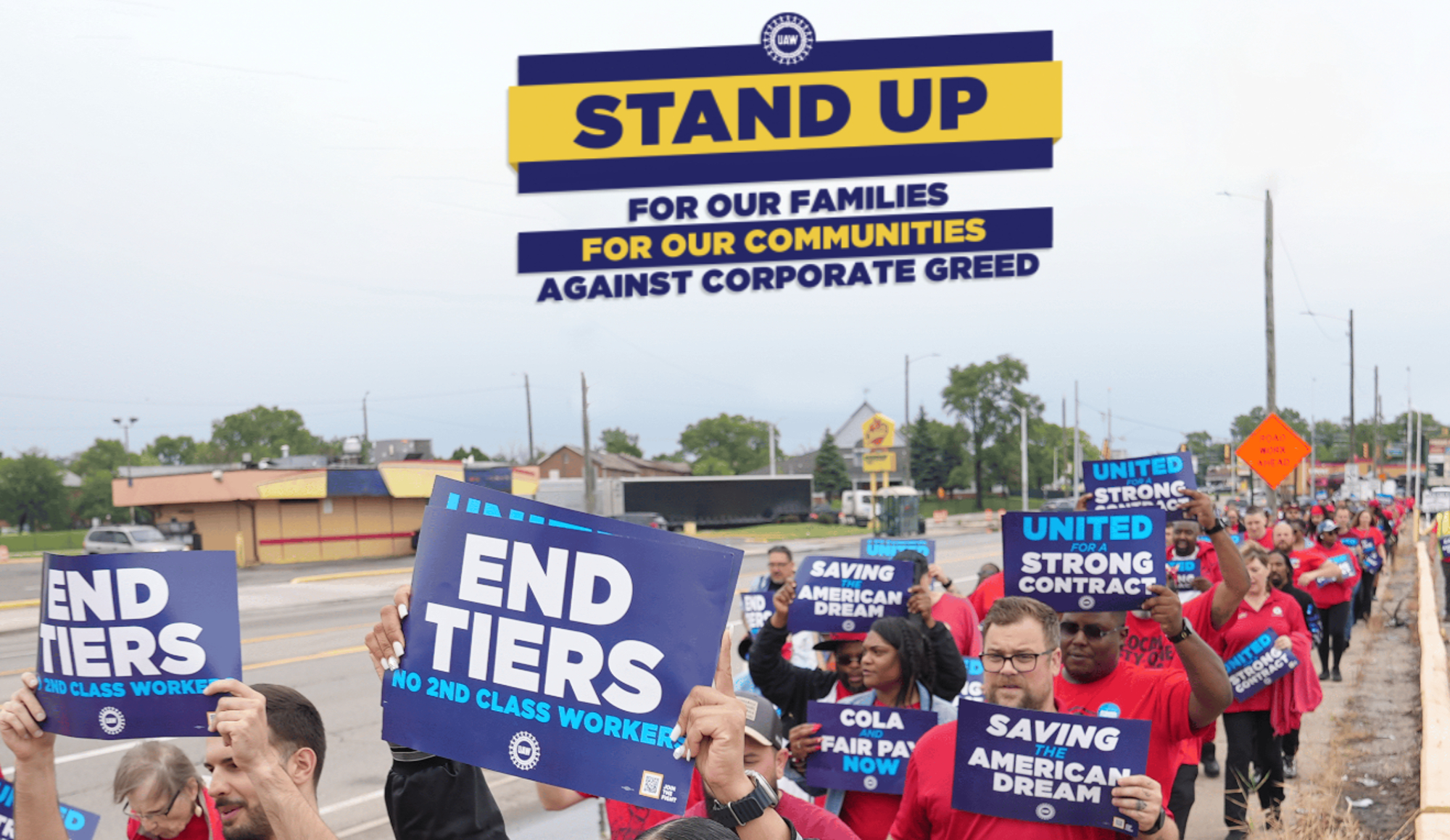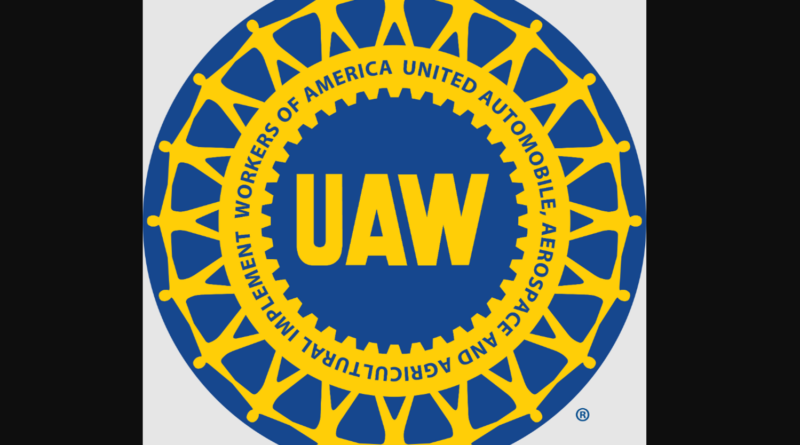UAW Go Big Strategy Focuses On Non-Union Automakers, Including Tesla
The United Auto Workers just pulled off one of the most successful strikes in history. In a carefully coordinated campaign that targeted the most profitable factories at GM, Ford, and Stellantis simultaneously, the union won historic wage increases coupled with strong gains in job security and benefits.
Emboldened by its success, the UAW now seeks to add workers at Toyota, Volkswagen, Honda, Hyundai, Kia, Mercedes, BMW, Volvo, Subaru, Mazda, Lucid, Rivian, and Tesla. Especially Tesla. In a press statement, the UAW said on November 29, 2023 that autoworkers at more than a dozen non-union automakers have announced simultaneous campaigns across the country to join the UAW. Thousands of non-union autoworkers are signing cards at the new UAW web page, UAW.org/join, and are publicly organizing to join the UAW. The organizing drive will cover nearly 150,000 autoworkers across at least thirteen automakers.
UAW Targets Non-Union Automakers

One of the strongest UAW campaigns is at Toyota’s Georgetown, Kentucky assembly complex, where 7,800 workers make the company’s iconic Camry and highly profitable RAV 4 and Lexus ES. Toyota announced it was raising pay just after UAW members won record contracts at the Big Three. But Jeff Allen, a 29-year team member at Georgetown who’s had two work-related surgeries, says the raise won’t dissuade workers from organizing.
“We’ve lost so much since I started here, and the raise won’t make up for that,” he said. “It won’t make up for the health benefits we’ve lost, it won’t make up for the wear and tear on our bodies. We still build a quality vehicle. People take pride in that, but morale is at an all-time low. They can give you a raise today and jack up your health benefits tomorrow. A union contract is the only way to win what’s fair.”
Many of the non-union automakers use a mix of full-time, temporary and contract employees to divide the workforce and depress wages. At Hyundai’s assembly plant in Montgomery, Ala., Kissy Cox worked for eight years in the paint shop as an employee of Glovis, a contractor that operates inside the plant. Cox made $9.25 an hour when she started at Glovis in 2014. She didn’t become a full-time Hyundai employee until July 2022.
“Hyundai would be so much better with a union,” said Cox, who is now a production line worker. “I’m on workers’ comp right now because I just had carpal tunnel surgery. In my area, we struggle to keep a full staff because so many people are out injured. Being in the union, having a real say for safer jobs, it would be a better way of life for all of us.”
UAW Says “It’s Your Turn”
In a new video, UAW President Shawn Fain says, “To all the autoworkers out there working without the benefits of a union: now it’s your turn. Since we began our Stand Up Strike, the response from autoworkers at non-union companies has been overwhelming.
“Workers across the country, from the West to the Midwest and especially in the South, are reaching out to join our movement and to join the UAW. So go to uaw.org/join. The money is there. The time is right. And the answer is simple. You don’t have to live paycheck to paycheck. You don’t have to worry about how you’re going to pay your rent or feed your family while the company makes billions. A better life is out there.” Here is that video, for your viewing pleasure:
Fearing a surge of enthusiasm for organizing following the UAW’s historic victories at the Big Three, many non-union automakers have attempted to lower autoworkers’ expectations by raising pay and shortening wage progressions. Still, non-union autoworkers lag far behind UAW autoworkers in wages, benefits, and rights on the job.
We Have What Workers Want
“We saw what the UAW members won and it started us thinking that we as workers are worth a lot more than our company currently values us at,” said Isaac Meadows, a team member at Volkswagen in Chattanooga, Tenn., who started nine months ago on the assembly line. “Like most auto plants, we shut down in the summer and winter, but we’re not paid for that. We have to use our PTO [paid-time-off]. For me, that means I have just two days of PTO to use for the rest of the year. Even top-out guys aren’t getting much more than that. We’re not trying to break the bank, but VW can do better and change this from a good job to a great career.”
The tight labor market since the pandemic is driving workers to demand more from the non-union automakers. “The company is having trouble hiring people,” said Jeremy Kimbrell, a measurement machine operator at the Mercedes-Benz Tuscaloosa assembly plant in Alabama. “They introduced two tiers here, so they’re having such a hard time keeping the new workers. It’s just a revolving door. A whole lot of people who never talked union before, they know we have to stand up. They’re saying give me a card to sign.”
Lori Paton started working at the electric vehicle (EV) startup Rivian at its Bloomington, Ill., assembly plant in October 2022. “The company likes to tell us we’re making the plane while flying it, and that explains a lot about the problems we have,” said Paton, a team member in the Chassis 3 group. “We have all sorts of safety issues. Turnover is terrible. Every group has a story about a new employee who did not make it to first break. The lack of safety, the low pay, the forced overtime — there are so many reasons we need to be union.”
The unprecedented effort to publicly organize the entire non-union auto sector at once marks a departure with past organizing efforts. The new aggressive strategy is reflective of a new era of working class leverage and workplace organizing, the union says.
The UAW says if 30% of workers at a non-union plant sign cards seeking to join, it would make that fact public. If 50% of workers seek to join, the UAW will hold a rally with Fain to tout the effort. At 70% and with an organizing committee in place, the UAW would seek recognition or demand a union representation vote.
Reversing A Long Decline
The UAW is seeking to reverse a long decline in union membership that began in the 1950s when textile and shoe manufacturers began fleeing New England to tale advantage of anti-union policies in southern states. That effort was so successful, it sowed the seeds for NAFTA and what Ross Perot called “the great sucking sound” caused by jobs leaving the US and flowing to Mexico.
Perot was right, but then globalization kicked in and manufacturers began to flee Mexico for places where people were willing to work for the least amount of money. For what the locals got out of it, see Naomi Klein’s brilliant No Logo for a detailed description of what life was like for those low wage workers. Instead of being lifted our of poverty, they became wage slaves in a brutal economic system that chewed up workers and spit them out if they couldn’t perform their assigned tasks.
Covid shattered the globalization illusion. Now the UAW seeks to reinvigorate the American Dream of a fair day’s pay for a fair day’s work. The constant reports of half the world’s wealth being owned by a handful of mega billionaires rankles a lot of people who now want their piece of the pie. The UAW says it can make that happen.
The recent auto strike was remarkably free of violence and charges of unfair labor practices, but organizing non-union operations could be entirely different. Many of the states where those factories are located are aggressively anti-union. Strikers and organizers can expect constant harassment from local and state authorities as well as lots of pushback from local residents who have been brought up to loathe unions.
The Musk Factor
And then there is Elon Musk, who is virulently anti-union and went on a foul mouthed public tirade against advertisers who have deserted his personal fiefdom, X. We can expect more bad behavior from Elon as the UAW ramps up its organizing campaign. Buckle up, grab your popcorn, and get ready for the cage match of the century.
There is a dark side to all this, however. Ultimately, American consumers will have to decide whether they are willing to pay higher prices for domestically produced products. It costs about half as much to manufacture a car in China as it does in the US. Right now, Chinese cars have captured about 20% of the new car market in Mexico. Tesla can sell cars imported from China in Canada for less than the cars it manufactures in Fremont.
And yet, why must workers have to sacrifice their bodies so corporate executives can make millions? How is that fair and equitable? The tug of war between labor and management is as old as history itself. The UAW senses a chance to re-balance things in the workers’ favor. We’ll see how that goes here in the next few months.
Have a tip for CleanTechnica? Want to advertise? Want to suggest a guest for our CleanTech Talk podcast? Contact us here.
Sign up for our daily newsletter for 15 new cleantech stories a day. Or sign up for our weekly one if daily is too frequent.
CleanTechnica uses affiliate links. See our policy here.
CleanTechnica's Comment Policy

